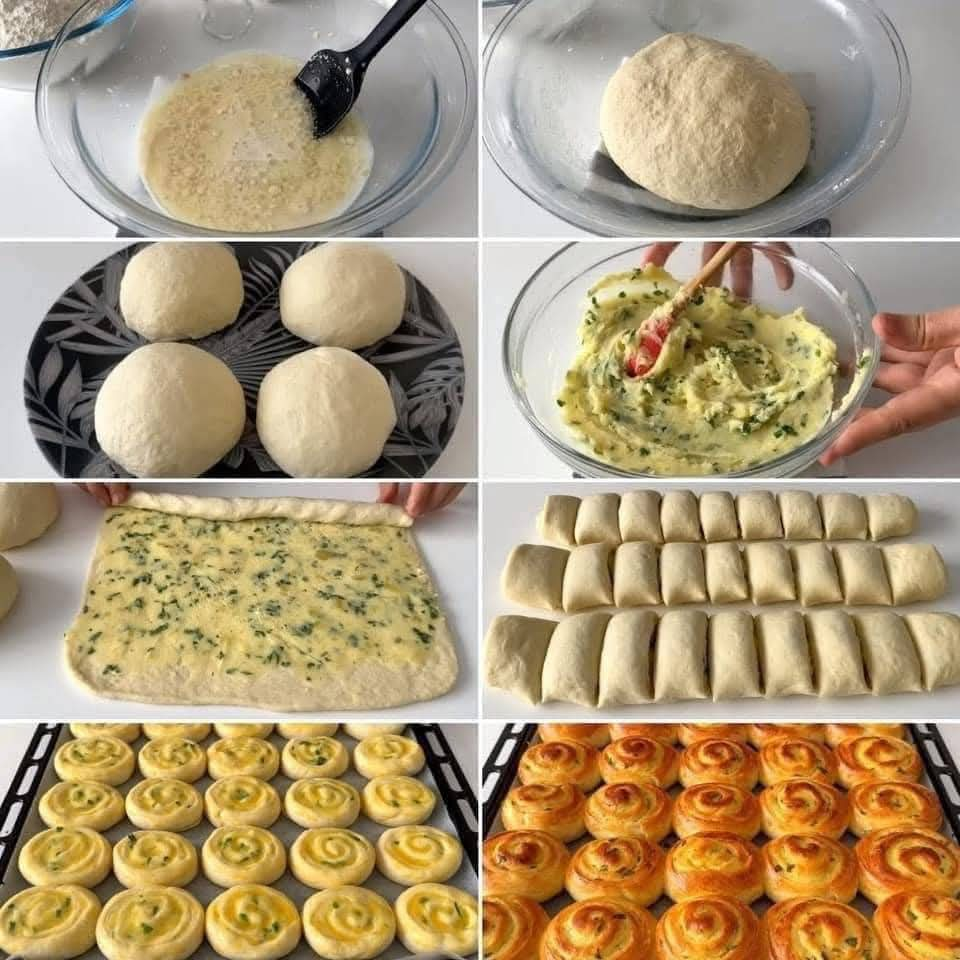Introduction: Buttery and Flaky Pastry Dough
This buttery pastry dough is the foundation of many delicious desserts and savory dishes. With its rich flavor and crisp, flaky texture, it’s perfect for tarts, pies, quiches, or even cookies.
The key to achieving a perfect dough is using cold butter and handling it minimally to preserve the butter’s layers, resulting in a tender, melt-in-your-mouth crust.
Whether you’re making a sweet fruit tart, a savory quiche, or just enjoying a simple pie, this versatile pastry dough will elevate any dish. It’s easy to prepare and yields the perfect crust every time!
Ingredients for Buttery Pastry Dough
2 1/2 cups (300 g) all-purpose flour
1/4 cup (50 g) granulated sugar
1/2 teaspoon salt
1 cup (2 sticks) (226 g) unsalted butter, cold and cut into small cubes
1/4 cup (60 ml) cold water
1 large egg yolk
1 teaspoon vanilla extract (optional, for extra flavor)
This dough is perfect for pies, tarts, and cookies!
Instructions: How to Make Buttery Pastry Dough
Mix the Dry Ingredients
In a large bowl, whisk together the flour, sugar, and salt.
Incorporate the Butter
Add the cold butter cubes and mix using your fingers or a pastry cutter until the mixture resembles coarse crumbs with small pea-sized pieces of butter.
Add the Wet Ingredients
In a small bowl, whisk together the egg yolk, cold water, and vanilla extract (if using).
Gradually pour this mixture into the flour mixture, stirring gently until the dough begins to come together.
Form the Dough
Gather the dough into a ball, being careful not to overwork it (this keeps it tender and flaky).
Flatten it slightly into a disc, wrap it in plastic wrap, and refrigerate for 30 minutes to 1 hour.
Roll Out and Use
Once chilled, roll out the dough on a lightly floured surface.
Use it for pies, tarts, or cookies as needed.
Baking
For pre-baked crusts: Prick the bottom with a fork and bake at 350°F (180°C) for 15-20 minutes.
For filled pastries: Follow the specific recipe instructions.
This dough creates a buttery, flaky crust perfect for both sweet and savory treats!
Variations and Tips for Perfect Pastry Dough
Variations:
For a Sweet Dough:
Add 1 tablespoon of powdered sugar to the dry ingredients for a sweeter base, perfect for fruit tarts, cookies, or sweet pies.
For a Savory Dough:
Omit the sugar and add 1/2 teaspoon of dried herbs like thyme, rosemary, or oregano. This makes an excellent base for savory pies or quiches.
Whole Wheat Pastry Dough:
Replace half of the all-purpose flour with whole wheat flour for a nuttier flavor and slightly denser texture, ideal for rustic pies.
Almond Pastry Dough:
Replace 2 tablespoons of the flour with ground almonds for a nutty twist, adding richness and flavor to your crust.
Gluten-Free Pastry Dough:
Use gluten-free flour blend instead of all-purpose flour. You might need to add a bit more cold water to achieve the right dough consistency.
Tips for Perfect Pastry Dough
Keep Ingredients Cold
Ensure your butter and water are cold to prevent the fat from melting too soon, which keeps the dough flaky.
Minimal Handling
Don’t overwork the dough. Handle it gently and only as much as needed to bring it together. Overworking can lead to a tough crust.
Chill the Dough
Let the dough rest in the fridge for at least 30 minutes before rolling it out. This helps the gluten relax and prevents the dough from shrinking when baked.
Roll Between Parchment Paper
Roll the dough between two sheets of parchment paper to avoid using excess flour, which can make the dough tough.
Poking Holes for Even Cooking
If you’re baking an empty crust, use a fork to prick the bottom and sides of the dough to prevent air bubbles and ensure an even bake.
Blind Baking
For pies with wet fillings (like custard or pumpkin pie), it’s often best to blind-bake the crust. This involves pre-baking the crust with parchment and pie weights to keep it crisp.
By experimenting with these variations and following these tips, you’ll achieve a perfect, flaky pastry dough every time!
How to Store Pastry Dough
Storing Unused Dough
In the Refrigerator:
After preparing the dough, form it into a disk, wrap it tightly in plastic wrap, and place it in an airtight container or resealable plastic bag.
Refrigerate for up to 2-3 days. Let it sit at room temperature for a few minutes before rolling it out to prevent cracking.
Freezing Pastry Dough
For Longer Storage:
Wrap the dough in plastic wrap and then place it in a freezer-safe bag or container
Freeze for up to 2 months.
To use, transfer the dough to the fridge to thaw overnight or leave it at room temperature for about 30 minutes to soften before rolling out.
Storing Pre-Baked Crusts
If you’ve baked the crust beforehand, let it cool completely and store it in an airtight container or cover it with foil.
Keep it at room temperature for up to 2-3 days, or refrigerate for up to 1 week.
With these storage tips, you can have fresh pastry dough ready whenever you need it!
